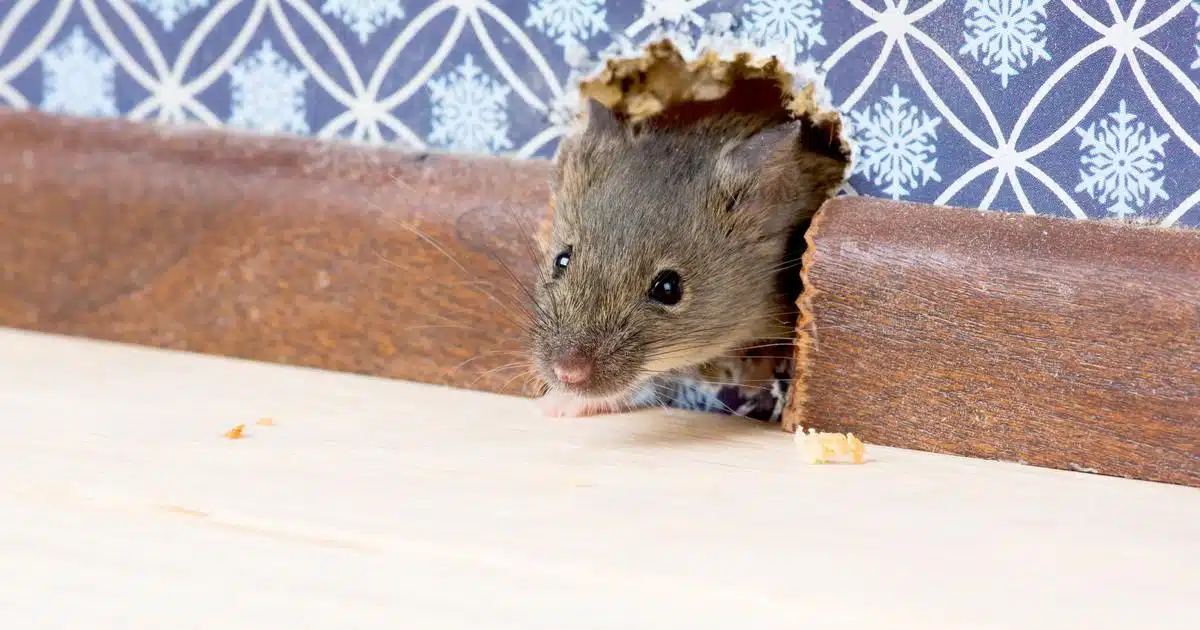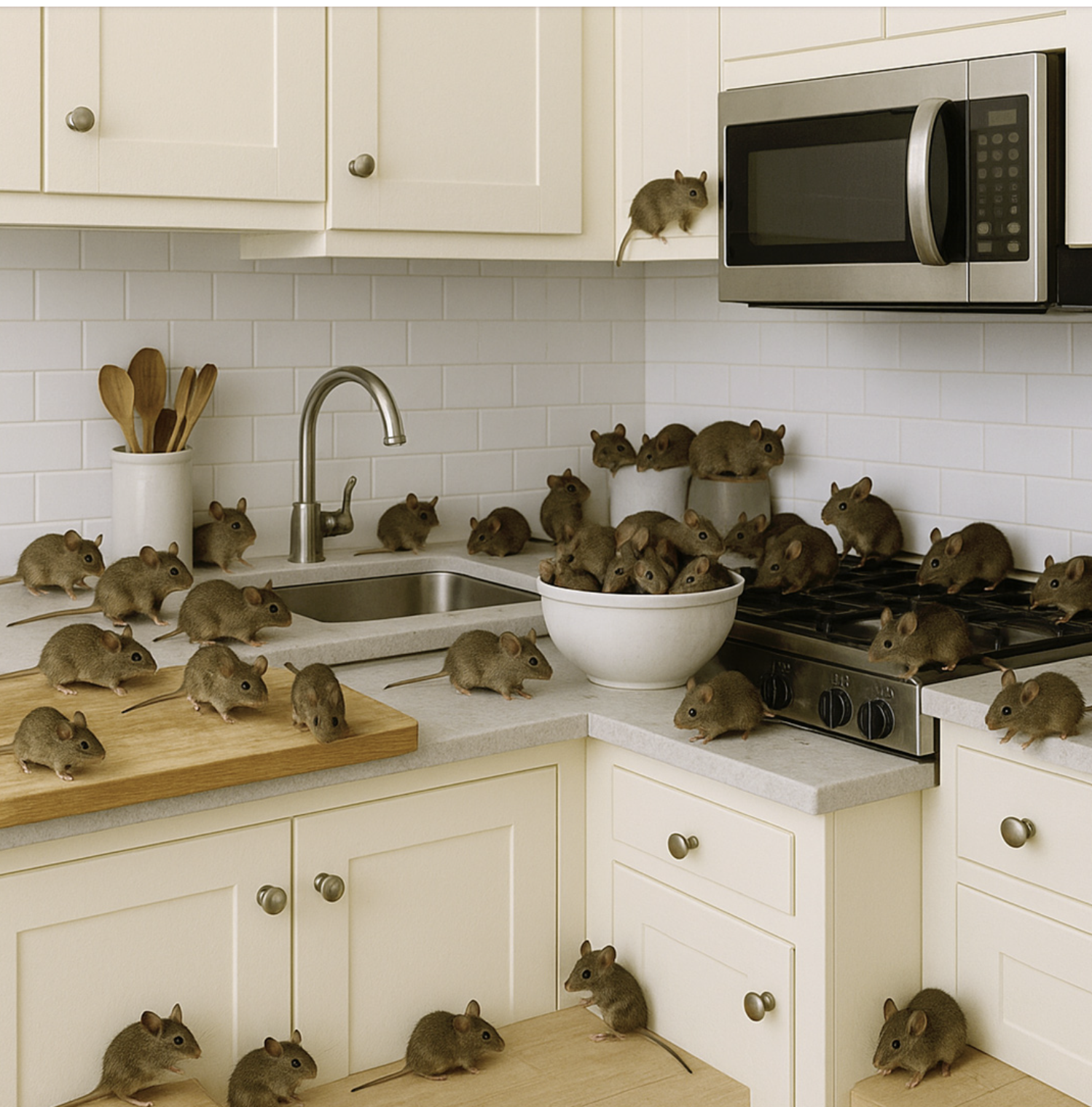Before pulling out all the stops, you still need to make sure it’s really a mouse. Here are the most common clues:
- Small black droppings : similar to grains of rice, often near food sources.
- Nighttime noises : scratching, squeaking, rapid movement in walls or ceilings.
- Nests : Made with paper, fabric, or other soft materials.
- Teeth marks : on electrical wires, furniture or packaging.

How to get rid of mice naturally?
-
Plug the entrances
As with a castle, start by securing the access points. Use putty, steel wool, or metal gratings to seal all holes, even the smallest ones.
-
Remove food sources
Clean work surfaces thoroughly, seal your food tightly, empty the trash regularly, and never leave kibble or crumbs accessible.
-
Use natural repellents
- Peppermint essential oil : An unbearable smell for mice. Soak cotton balls in the oil and place them near entry points.
- Bay leaves : they disrupt their sense of smell.
- Cloves or white vinegar : simple but effective solutions.
-
Set humane traps
Choose live traps that capture mice without killing them. Then release them far from the house, in a wooded or agricultural area.
What if the invasion persists?
If, despite your best efforts, the mice are still there, it may be necessary to call a professional pest control specialist. These experts have more powerful methods while respecting safety standards.
Preventing a new invasion
- Inspect your home regularly , especially in the fall and winter.
- Store food in airtight containers.
- Install rodent-proof screens on ventilation openings.
A mouse infestation can be unpleasant, but it’s not inevitable. By understanding their habits and taking simple, natural steps, you can restore peace and quiet to your home… without war or poison.
